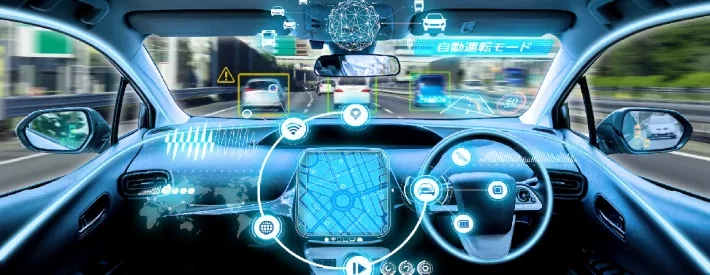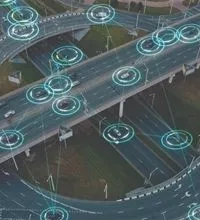How the UK is heading autonomous by 2025

Automotive is pushing forward with new developments, and it isn’t solely focused on electrification. Advanced driver assistance systems are providing a route to fully autonomous driving technologies and the UK government is determined to help the industry push forward.
UK roads could see self-driving vehicles rolled out by 2025 thanks to new government plans – backed by £100 million – which prioritise safety through new laws and create thousands of new jobs in the industry.
Some vehicles, including cars, coaches and lorries, with self-driving features could be operating on motorways in the next year, and plans set out new legislation which will allow for the safe wider rollout of self-driving vehicles by 2025. This enables the UK to take full advantage of the emerging market of self-driving vehicles – which could create up to 38,000 jobs and could be worth an estimated £42 billion.
The government’s vision for self-driving vehicles is backed by a total of £100 million, with £34 million confirmed for research to support safety developments and inform more detailed legislation. This could include researching the performance of self-driving cars in poor weather conditions and how they interact with pedestrians, other vehicles, and cyclists.
The government has also confirmed £20 million, as part of the overall £100 million, to help kick-start commercial self-driving services and enable businesses to grow and create jobs in the UK, following an existing £40 million investment. Successful projects could help see, for example, groceries delivered to customers by self-driving vehicles, or shuttle pods assisting passengers when moving through airports. £6 million will also be used for further market research and to support commercialisation of the technology.
Transport Secretary Grant Shapps said: “The benefits of self-driving vehicles have the potential to be huge. Not only can they improve people’s access to education and other vital services, but the industry itself can create tens of thousands of job opportunities throughout the country.
The government hopes that self-driving vehicles could revolutionise public transport and passenger travel, especially for those who don’t drive, better connect rural communities and reduce road collisions caused by human error. Further in the future, they could, for example, provide tailored on-demand links from rural towns and villages to existing public transport options nearby. They could also provide more direct and timely services that enable people to better access vital services such as schools and medical appointments.
There are still challenges that autonomous technologies face, and the route to vehicles driving themselves isn’t straightforward.
AA president, Edmund King, said: “The automotive world is changing rapidly and so the government is right to embrace the positive changes offered by this new technology and back it by funding research and putting forward legislation. Assisted driving systems, for example, autonomous emergency braking and adaptive cruise control, are already helping millions of drivers stay safe on the roads.
“It is still quite a big leap from assisted driving, where the driver is still in control, to self-driving, where the car takes control. It is important that the government does study how these vehicles would interact with other road users on different roads and changing weather conditions. However the ultimate prize, in terms of saving thousands of lives and improving the mobility of the elderly and the less mobile, is well worth pursuing.”
Automotive is well aware of the challenges, and achieving the ultimate goal of positioning the UK as a centre for self-driving innovation will require input from different sectors.
Jonathan Hewett, Chief Executive of Thatcham Research said: “All the ingredients are present for the UK to become a global leader in this space. However, it is paramount that we make sense of the data these vehicles will provide, to inform risk and ultimately pave the way for safe adoption.
“Any challenges encountered by vehicles with self-driving capability will be heavily scrutinised. Complete clarity around the driver’s legal responsibilities, along with how the technology is marketed, how the dealer describes systems when handing over the keys and how the self-driving system itself communicates with the driver, will play its part too.
“As such, collaboration between Government, regulators, carmakers and the insurance industry will be essential to creating a safe system for adoption and the age of humankind interacting with autonomous technology.”




